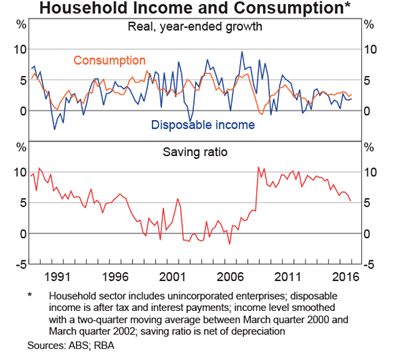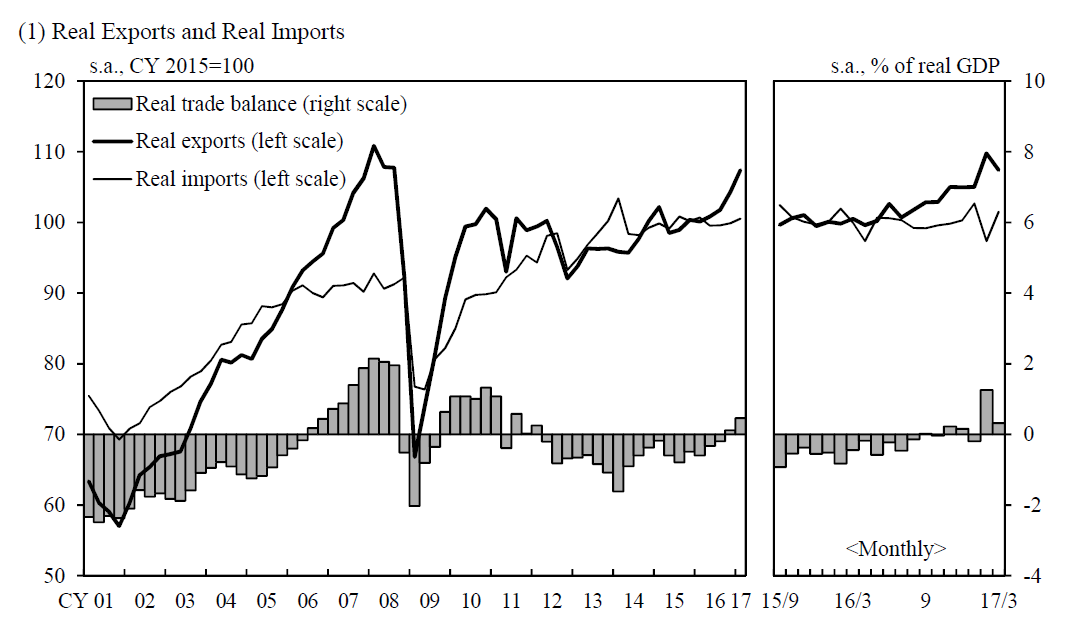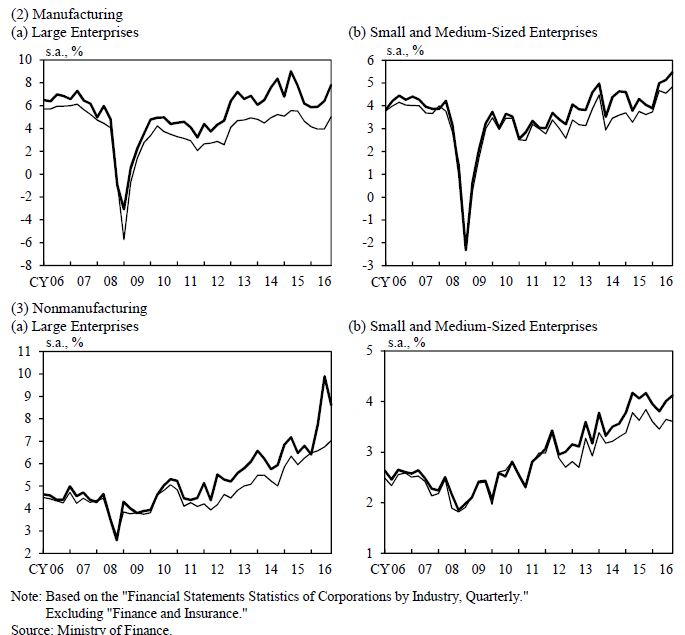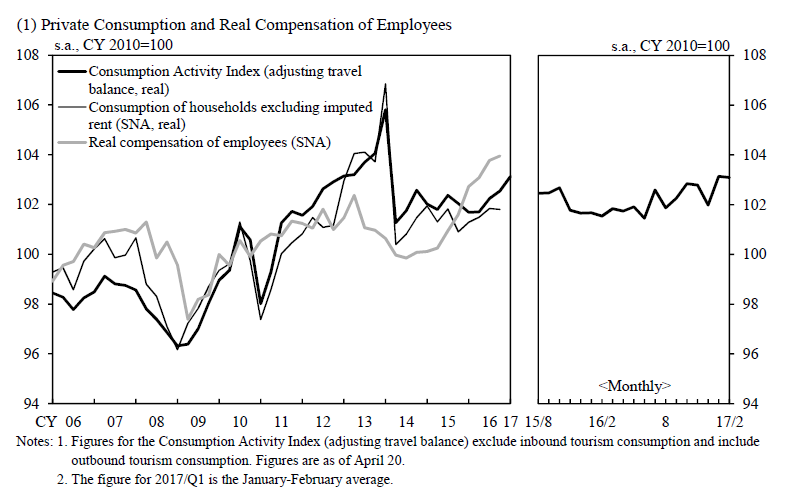There is good and bad news in this week’s macro headlines. On the bullish side, the World Bank has increased their latest global growth forecast, which they project to reach 2.7% by the end of the year. This is consistent with the increased levels in the Markit PMIs that started in 4Q16. On the bearish side, despite increased sentiment, global capex is still projected to be weak. This is actually an understandable development. Globally, capacity utilization is lower and G7 companies are more focused on intellectual property research, which is less capital intensive.
The RBA released their latest minutes, which contained the following observation about retail sales – an important coincident indicator:
Weak growth in retail sales in the March quarter had pointed to a slowing in consumption growth following strong growth in the December quarter. According to liaison and survey data, retail trading conditions had remained challenging, although they had appeared to have improved a little since the start of the year, and this assessment had been supported by the large rise in retail sales in April. Low household income growth and concerns about increased indebtedness had continued to pose downside risks to the outlook for consumption growth.
While the Australian economy has remained very resilient – especially during the Great Recession – this development might indicate an emerging weakness. The following events are causing weak retail sales:
- Australian unemployment has edged higher as the economy has rebalanced from focused on raw material exports to a broader source of income. The following chart shows that underemployment (in purple) increased nearly 200 basis points between 2013 and now. At the same time, the unemployment rate (in blue) is about 100 basis points higer:

- The increasing unemployment and under-employment rate has lowered average hourly earnings growth. Unit labor costs (in purple) have fluctuated around 0% since 2012 and average hourly earnings (in yellow) are far weaker than previous expansions:

- Therefore, households have dipped into savings to maintain a certain pace of consumption. The following chart shows that the savings rate (in red) has declined from ~10% ~5% in the last 3 years:

The previous cause and effect chain of events is standard macroeconomics and should be a surprise. The main issue for the RBA is whether or not this situation continues, which is entirely dependent on the pace of job growth. In other Australian news, new car sales increased 2.9% M/M and 4.9% Y/Y.
The minutes of the latest BOJ meeting contained several important points. First, exports are increasing thanks to faster growth in ASEAN and newly industrialized economies (“NIEs”):

Second, corporate profits are up (top chart) which is leading to increased capital investment (bottom chart):

Third, personal income has increased (top chart) which is contributing to a moderate increase in consumption (bottom chart):


The BOJ has long-argued for a “virtuous cycle:” an increase in business profits leads to higher investment while an increasing personal income feeds higher personal consumption expenditures. The BOJ’s policy endgame is for increased consumption to lead to higher inflation. Unfortunately, that has not played out yet. But the bank remains hopeful.
While there was no economic news from the UK, it does appear that a major debate is developing within the BOE. Carney struck a very dovish tone in his latest speech:
From my perspective, given the mixed signals on consumer spending and business investment, and given the still subdued domestic inflationary pressures, in particular anaemic wage growth, now is not yet the time to begin that adjustment. In the coming months, I would like to see the extent to which weaker consumption growth is offset by other components of demand, whether wages begin to firm, and more generally, how the economy reacts to the prospect of tighter financial conditions and the reality of Brexit negotiations.
However, Andy Haldane was far more hawkish last week:
Having weighed the evidence, I think that the balance of risks associated with tightening “too early”, on the one hand, and “too late”, on the other, has swung materially towards the latter in the past six to nine months.
The risks of tightening “too early” have shrunk as growth and, to lesser extent, inflation have shown greater resilience than expected. And if policy tightened “too late”, this could result in a much steeper path of rate rises later on.
This is that much more important as Haldane did not vote for a rate increase at the latest meeting. The last vote was 5-3, which means the balance of power could have shifted with Haldane’s statement.
News from the EU continues pointing towards a solid expansion. The Markit composite number was 55.7. Although this was lower than the previous month’s 56.8, it’s still a solid report. But manufacturing is very strong. The overall reading was 58.5. But the subcategories of output and new orders were the strongest in 6 years. And employment is at very high levels. The FT wrote an article titled, “Anatomy of a Comeback” that provides more debt on the topic.
The overall tenor of international news continues to be bullish. This started in the 4Q16 and has continued ever since. Let's hope the trend projects into the next few months.
